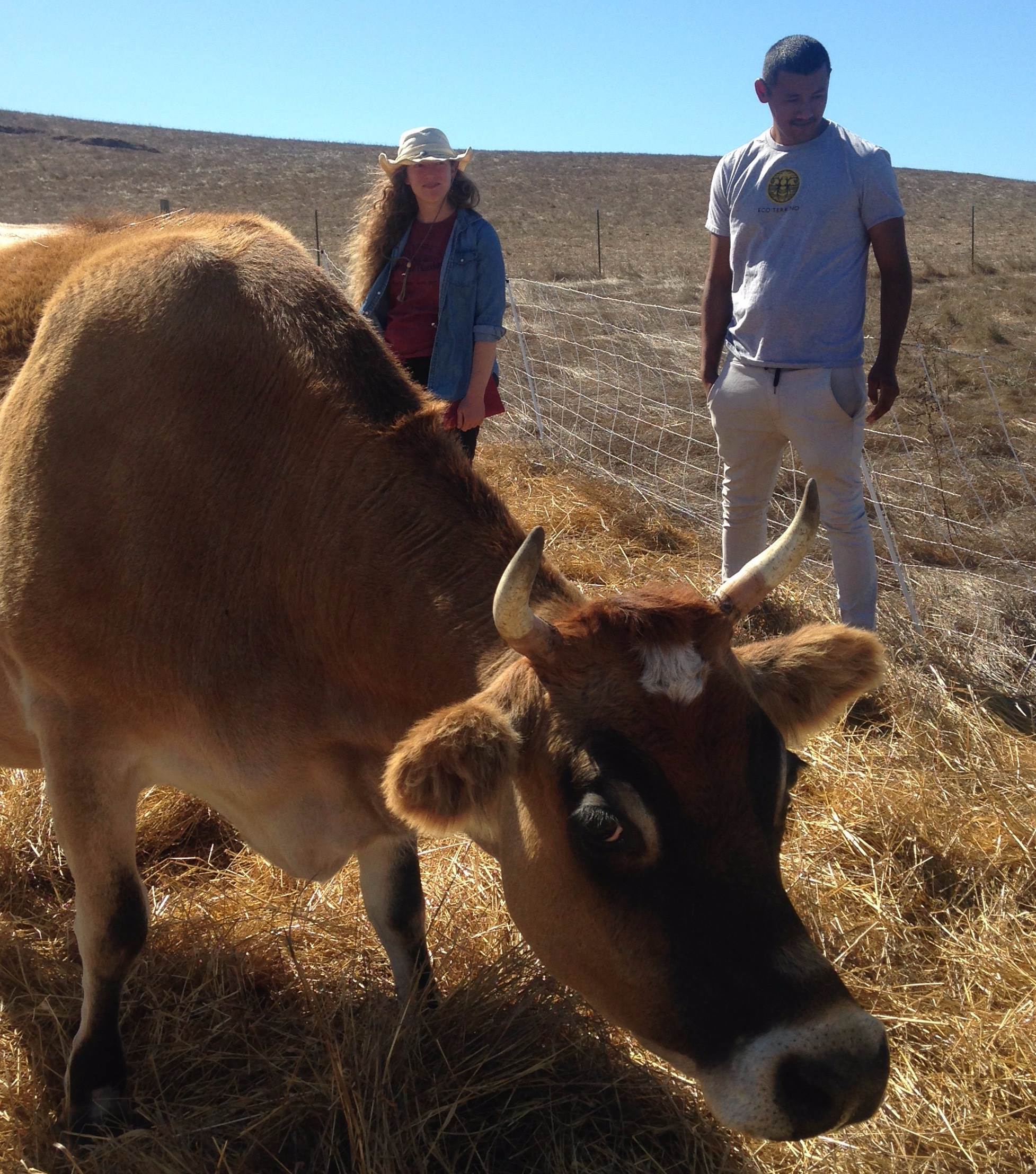
By Thea Maria Carlson "We must know how to gain a kind of personal relationship to all things that concern our farming work and above all a personal relationship to the manure"
Rudolf Steiner, Agriculture, Lecture 4
The day after the autumn equinox, the Biodynamic Association of Northern California (BDANC) met for our fall meeting, hosted at Open Field Farm by Seth and Sarah James. Like many biodynamic practitioners in California, I am a member of both the BDA and BDANC, and I regularly attend BDANC's quarterly meetings which are wonderful opportunities to connect with local farmers, gardeners and biodynamic enthusiasts, experience different farm organisms in our bioregion, and make biodynamic preparations together.
The biodynamic preparations are a big focus of the fall meeting, with members working together to make the chamomile, dandelion, and oak bark compost preparations, and the horn manure spray preparation. The group always includes people on the full spectrum of experience, from those who have never touched a biodynamic preparation before to those who have dedicated many decades to biodynamics, and through a combination of conversations and hands-on demonstration, everyone has an opportunity to learn, share, and participate in the unique art of each preparation.
Horn manure the most widely known biodynamic preparation, and can seem deceptively simple. When asked about it, many people will just recite a basic recipe: "You take cow manure, put it in a cow horn, and bury it." But it's not just any manure, not just any horn, and we don't bury it any old which way. Without developing an understanding of and paying careful attention to each of these steps, we are unlikely to create a quality preparation.
Mid-way through the morning, I joined a group led by Seth James and Harald Hoven to collect manure. Open Field Farm has 120 Corriente cattle which they raise as 100% grass-fed beef, and three Brown Swiss dairy cows and a calf. Because the horn manure preparation is made with manure from a lactating female cow, we visited the dairy cows, who are rotated on pasture together with the sheep. Seth turned off the electric fence and we all stepped over to join the animals.
In the tall grass, it was a bit of a hunt to find the manure. People spread out and noticed the piles of tiny pellets left by the sheep, the small round piles from the calf, and the larger, classic "cow pies" from the adult cows, which were the ones we were after. Once someone found a cow pie, they would call Harald over, and the qualitative analysis would begin.
Harald explained that the manure needs to be within a good range of moisture, not too wet and not too dry, which depends both on what the cow is eating and how long the manure has been out of the cow's body. Manure from cows on wet green grass can be too runny, while manure from cows only eating dry grass or hay can be too stiff. The dairy cows at Open Field are on non-irrigated pasture, which in California's Mediterranean climate is quite brown by September, but they also get treated to fresh green vegetable scraps like carrot tops after each CSA harvest, which helped with the moisture content of their manure.
The cows had been in this particular area for two days, which meant all of the manure was fairly fresh, but not every pie was suitable. Some of the pies we found were too dry and old, some too wet and new, and some were just right -- which I would describe as thicker than pancake batter but not as thick as pizza dough. With the cows curiously sniffing us and watching our progress, we methodically moved through the pasture and carefully filled the bucket with the just-right manure, and then thanked the cows, hopped back over the fence, and walked back to the barn area.
Under an oak tree, Harald gathered some short sticks and we each took a stick and a horn and began filling, tapping the horns to remove any air pockets as they became full. As we filled the horns, several farmers asked Harald questions about the subtleties of where and when to bury the horns and dig them up, especially with the variations in weather in recent years, with some winters being very dry and others very wet. Harald discussed what qualities to look for in the finished preparation, and how we can adjust if it doesn't come out right the first time we dig it up.
Back together in a larger group, Matias offered a recent discovery he had made about burying horns. While watching animals in managed grazing, he noticed that whenever possible, they seemed to orient themselves all in the same direction, and that direction tended to be consistent. Through some research, he discovered that this orientation related to the magnetic declination of the land, and he began experimenting with burying horns in a flat plane with their tips oriented to the magnetic declination. He has found the quality of the resulting biodynamic preparation to be much more consistent since he started burying the horns in this way.
Standing in this group of 60+ members of the Northern California biodynamic community, with several guests from farther away, I was filled with gratitude for the depth possible in each one of our biodynamic journeys. I have participated in biodynamic preparation making numerous times, both in California and Wisconsin, and I still have so much to learn. Whether we are one day or forty years in, there is always an opportunity keep developing our relationship to the land and the preparations, and to find new ways to sense and respond to the changing and unique conditions we encounter.




Añadir nuevo comentario